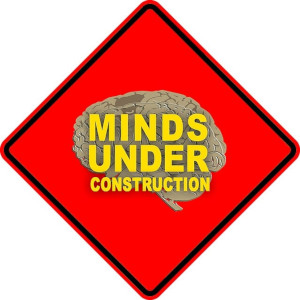The brain is the most complex part of our body; some say that it is the most complex structure in the universe. The human brain weighs on average 1.4 kg, and it is made out of billions of neurons. The connection between two neurons is called a synapse. Through the synapse go electrical and chemical messages. It is a process that forms the basis of basic sensory functions and is crucial for learning, memory, thought formation, and other cognitive activities. The brain and spinal cord together form a system known as the central nervous system. It controls our voluntary movements, for example, walking, and involuntary movements like breathing. It also controls our emotions.
The easiest way is to divide the human brain into three parts: the cerebrum, brainstem, and cerebellum. The largest part of the human brain is the cerebrum. It takes up almost 85% of the brain’s weight. The wrinkled outer part is called the cerebral cortex (it is made out of grey matter, inside is white matter), which makes us humans. The cerebral cortex is divided into two hemispheres. The right hemisphere controls the left side of the body, and the left hemisphere controls the right side of the body. The sides are connected with the corpus callosum, and through that, both sides share information. It regulates our movements, body temperature, speech, judgment, thinking and reasoning, problem-solving, emotions, and learning. Also regulates functions like vision, hearing, touch, and all the other senses. The brainstem connects the cerebrum with the spinal cord. The brainstem is made up of the midbrain, pons, and medulla. The midbrain is responsible for hearing, making calculated movements, reacting to environmental changes, helping us to produce tears, make facial expressions, regulating the heart rhythm, blood flow, breathing, and so on. The cerebellum is also known as the ‘little brain’. It is located at the back of our heads. It is also divided into two hemispheres. It is responsible for voluntary muscle movements, for example, maintaining posture, balance, and equilibrium. New studies suggest that the cerebellum may also control our emotions and behaviour, and it might be involved in forming addictions, autism, and schizophrenia.
The brain hemispheres are divided into lobes. There are four lobes, and they all have a specific function: frontal, parietal, temporal, and occipital. The frontal lobe, as the name suggests, is located in the front. It is responsible for decision-making, movement, and forming personal characteristics. The parietal lobe is the middle part of the brain. It helps us to understand when someone is touching us or if someone is speaking a different language. It also helps to identify objects and helps us to orientate in the room. The back part of our brain is called the occipital lobe, and it is responsible for vision. The side of our head is called the temporal lobe. They are responsible for short-term memory, speech, understanding rhythm, and also smell recognition.
There are also other parts of the brain called the pituitary gland, hypothalamus, amygdala, hippocampus, pineal gland, ventricles, and cerebrospinal fluid.
Our brains grow really fast when we are young. By the age of six, our brains are almost 90–95% of adult size. During adolescence, our brain goes through fine-tuning, which continues until the mid-twenties. During the adolescent period, when our brains become more efficient, things we don’t use are forgotten, and the things we use are strengthened. It is based on the saying ‘use it or lose it’.
The brain-developing process starts at the back of our brain. The frontal lobe is developed last. Like already said, the frontal lobe is responsible for planning and thinking about consequences, solving problems, and controlling impulses. Since the frontal lobe is not as developed as the adult frontal lobe, teenagers rely more on the amygdala.
Amygdala is related to emotions, impulses, aggression, and instinctive behaviour. Amygdala is described as ‘fight or flight’. If the amygdala is active, then it sends information to the hypothalamus, from there, adrenaline is released. Adrenaline makes our hearts beat faster, and our breathing is also faster. The common reaction to this is aggression and passive behaviour, and this makes us do irrational things.
Since the amygdala makes us think more about our emotions, it can cause more risky behaviour, and teenagers might say things before they think about them. Sometimes adolescent behaviour can look similar to that of an adult who is under the influence of drugs.
Other changes that are happening during adolescence include nerve cell development. Nerve cells start to develop myelin. Myelin is like an isolator layer, which protects nerve cells. Myelin also helps cells communicate with each other, and it helps the adult brain make coordinated thoughts, actions, and behaviours. Also, the layer of grey matter in the cerebral cortex thins a little, and the volume of white matter tends to grow.
Those differences in the brain don’t mean that adolescents can’t make decisions or distinguish right from wrong. Nor does it mean that they shouldn’t be responsible for their behaviour. But being aware of these differences can help parents and teachers understand, prevent, and manage adolescent behaviour.

Sources:
https://www.nationalgeographic.com/science/article/brain-2
https://www.ninds.nih.gov/health-information/public-education/brain-basics/brain-basics-know-your-brain
https://www.britannica.com/science/brain
https://www.hopkinsmedicine.org/health/conditions-and-diseases/anatomy-of-the-brain
https://raisingchildren.net.au/pre-teens/development/understanding-your-pre-teen/brain-development-teens
https://www.nimh.nih.gov/health/publications/the-teen-brain-7-things-to-know
https://mainstreetcounselingnj.com/2018/09/18/why-teens-behave-the-way-they-do-3-things-you-should-know-about-adolescent-brain-development/
https://pubmed.ncbi.nlm.nih.gov/18037008/
https://www.aacap.org/AACAP/Families_and_Youth/Facts_for_Families/FFF-Guide/The-Teen-Brain-Behavior-Problem-Solving-and-Decision-Making-095.aspx
https://www.apa.org/monitor/2022/07/feature-neuroscience-teen-brain
